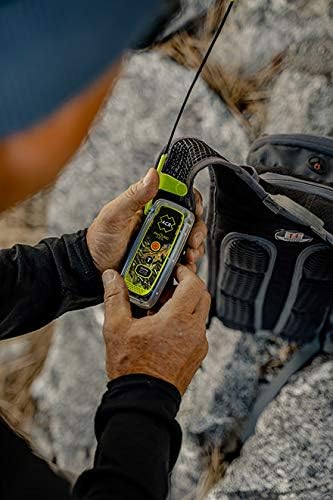ACR ResQLink 400 Personal Locator Beacon
Availability:In stock
Have a question?
Ever been out on a hike, paddling across open water, or exploring remote terrain and thought—what if something goes wrong? No signal. No help. Just you and the elements. That’s where the ACR ResQLink 400 comes in clutch. It’s not just a gadget—it’s your backup plan, your lifeline, your “get-me-out-of-here” button when everything else fails.
Your Emergency Wingman
The ResQLink 400 is a compact, rugged Personal Locator Beacon (PLB) designed for one thing: to get rescuers to you fast when you’re in trouble. With GPS positioning, 406 MHz signal transmission, and 121.5 MHz homing capability, this little device connects with a global satellite network (COSPAS-SARSAT) to alert search and rescue services—no subscription required.
Yes, you read that right. It doesn’t rely on cell towers or Wi-Fi. Once activated, it beams your location straight to emergency responders, even from the most remote places on Earth.
Built Tough for the Real World
Rain, snow, waves, heat—bring it on. The ResQLink 400 is waterproof, buoyant, and built to military standards. Whether you're kayaking in rough seas or hiking at high altitudes, this thing is made to survive the elements—just like you.
And it’s pocket-sized. Seriously. It fits in your hand, clips to your gear, and doesn’t add any annoying bulk. Think peace of mind in your jacket pocket.
Easy to Use in the Worst Moments
We all imagine staying calm in an emergency, but let’s be honest—panic happens. That’s why the ResQLink 400 is dead simple to use. Just deploy the antenna, press the activation button, and boom—you’re on the rescue radar.
The built-in strobe light and infrared signal boost visibility for rescuers, especially in low light or at night. It’s those little details that can mean everything when time is critical.
Why People Love It
Ask anyone who’s used one (or knows someone who has), and they’ll say the same thing: “It’s the kind of thing you hope you never use—but you’ll never regret carrying.” Whether you're deep in the wilderness or hundreds of miles offshore, it gives you that low-key, confident feeling that someone’s got your back.
Adventure pros, solo travelers, outdoor newbies—it doesn’t matter. When plans fall apart, the ResQLink 400 steps up.
No Subscription? Yep. That’s Huge.
Unlike some satellite messengers or trackers, the ACR ResQLink 400 doesn’t charge you monthly fees to access emergency services. It works through a free-to-use global satellite network monitored by government-run rescue coordination centers.
You only pay once—for the device—and it lasts for years.
Final Thoughts: Small Device, Big Lifesaver
Let’s cut to it: gear like this isn’t about bells and whistles. It’s about getting found when you need it most. The ACR ResQLink 400 is simple, tough, and built to do one job incredibly well—save your life.
So whether you’re trekking solo, sailing the coast, or off-roading in no-man’s land, carry one. Because adventures are better when they’re survivable.
FAQs
1. What exactly is the ResQLink 400?
It’s a personal locator beacon (PLB) that sends a distress signal to emergency services via satellite, helping rescuers find you if you're in trouble, even when there's no cell service.
2. Do I need a subscription for it to work?
Nope! The ResQLink 400 uses the global Cospas-Sarsat satellite system, which is free to use. Just register the device (it’s required and free), and you’re good to go.
3. How does it send my location?
It uses GPS and Galileo satellites to pinpoint your location and then sends that info to search and rescue teams via 406 MHz emergency frequency.
4. Is it waterproof?
Yes! It’s built for outdoor adventures—waterproof and even buoyant. It’ll float if dropped in water, which is great for boating or kayaking.
5. How long does the battery last?
It has a 5-year battery life (standby). Once activated, it transmits for up to 24 hours continuously.
6. Can I test it before using it in a real emergency?
Yes. There’s a self-test function and GPS test mode, so you can check it’s working without actually sending a distress signal.
7. How do I activate it in an emergency?
Flip up the antenna and press the activation button. That’s it. It’ll immediately start sending your location and distress signal.
8. Is it legal to carry this anywhere?
Mostly, yes—especially for outdoor use in remote areas. Just make sure to register it properly with the appropriate government agency.
9. What happens after I activate it?
Rescue authorities receive your signal, including your exact GPS coordinates, and they begin planning a response. It’s that fast and straightforward.
10. Who should carry a PLB like this?
Hikers, sailors, backcountry skiers, remote workers, pilots—anyone going off-grid. It’s a small investment for peace of mind and potentially, your life.







